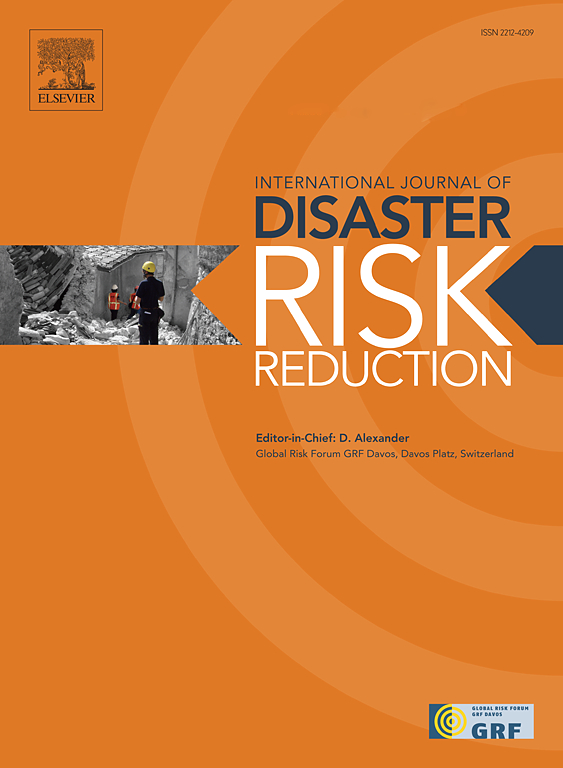对激进事件中文化遗产的公众风险认知进行语义丰富的时空映射
IF 4.5
1区 地球科学
Q1 GEOSCIENCES, MULTIDISCIPLINARY
International journal of disaster risk reduction
Pub Date : 2024-09-28
DOI:10.1016/j.ijdrr.2024.104857
引用次数: 0
摘要
文化遗产,尤其是列入联合国教科文组织《世界遗产名录》的文化遗产,应受到人类的珍视,并为子孙后代受到保护。激进的、有时是灾难性的遗产相关事件(HREs)引发了世界各地的社区积极参与社交媒体,分享他们的观点和情感。本文以 2019 年巴黎圣母院大火和威尼斯洪水为案例,对从 Twitter 收集到的引发全球关注的世界遗产相关遗产事件数据集进行了探索性数据分析。在线社区在事件发生前、发生期间和发生后的推特行为时空模式表明,人类活动事件所引起的激活程度有明显的区别。利用预先训练好的深度学习模型和无监督聚类算法,可以检测到网络辩论期间人们的主要情绪和话题,并将其可视化。从两个案例研究中收集到的数据可以观察到明显的时空动态变化,同时每个案例也因其严重程度不同而表现出各自的特点。本文提出的方法框架和获得的分析结果既可用于城市研究,以挖掘公众对 HRE 和其他城市事件的意见,从而降低风险,也可用于地理-人工智能社区,以测试时空聚类算法。本文章由计算机程序翻译,如有差异,请以英文原文为准。
Semantics-enriched spatiotemporal mapping of public risk perceptions for cultural heritage during radical events
Cultural heritage, especially those inscribed on the UNESCO World Heritage List, is meant to be valued by mankind and protected for future generations. Triggered by radical and sometimes disastrous Heritage-Related Events (HREs), communities around the world are actively involved on social media to share their opinions and emotional attachments. This paper presents exploratory data analyses on a dataset collected from Twitter concerning HREs in World Heritage that triggered global concerns, with cases of the Notre Dame Paris fire and the Venice flood, both in 2019. The spatiotemporal patterns of tweeting behaviours of online communities before, during, and after the event demonstrate a clear distinction of activation levels caused by the HREs. The dominant emotions and topics of people during the online debate are detected and visualized with pre-trained deep-learning models and unsupervised clustering algorithms. Clear spatiotemporal dynamics can be observed from the data collected in both case studies, while each case also demonstrated its specific characteristics due to the different severity. The methodological framework proposed and the analytical outcomes obtained in this paper could be used both in urban studies to mine the public opinions about HREs and other urban events for reducing risks, and by the Geo-AI community to test spatiotemporal clustering algorithms.
求助全文
通过发布文献求助,成功后即可免费获取论文全文。
去求助
来源期刊

International journal of disaster risk reduction
GEOSCIENCES, MULTIDISCIPLINARYMETEOROLOGY-METEOROLOGY & ATMOSPHERIC SCIENCES
CiteScore
8.70
自引率
18.00%
发文量
688
审稿时长
79 days
期刊介绍:
The International Journal of Disaster Risk Reduction (IJDRR) is the journal for researchers, policymakers and practitioners across diverse disciplines: earth sciences and their implications; environmental sciences; engineering; urban studies; geography; and the social sciences. IJDRR publishes fundamental and applied research, critical reviews, policy papers and case studies with a particular focus on multi-disciplinary research that aims to reduce the impact of natural, technological, social and intentional disasters. IJDRR stimulates exchange of ideas and knowledge transfer on disaster research, mitigation, adaptation, prevention and risk reduction at all geographical scales: local, national and international.
Key topics:-
-multifaceted disaster and cascading disasters
-the development of disaster risk reduction strategies and techniques
-discussion and development of effective warning and educational systems for risk management at all levels
-disasters associated with climate change
-vulnerability analysis and vulnerability trends
-emerging risks
-resilience against disasters.
The journal particularly encourages papers that approach risk from a multi-disciplinary perspective.
 求助内容:
求助内容: 应助结果提醒方式:
应助结果提醒方式:


